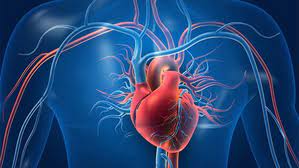Surviving a cardiac arrest is just the beginning of a patient’s journey toward recovery, as various factors influence their chances of survival and long-term health outcomes. Now, a groundbreaking multicenter study conducted by the Research Association for Emergency Medicine Ostwestfalen-Lippe, led by the University Clinic for Anaesthesiology, Intensive Care and Emergency Medicine, has shed light on the positive effects of the anaesthetic midazolam in this critical phase.
The study, which involved 571 patients, demonstrated that administering midazolam to patients after successful resuscitation significantly improved their chances of optimal oxygen saturation and CO2 levels in the blood without increasing the risk of complications such as a drop in blood pressure or another circulatory arrest.
Dr. Gerrit Jansen, lead author of the study, emphasized the importance of including this specific group of patients in guidelines for pre-hospital anesthesia. “Midazolam has proven to have a particularly positive effect in this group,” he stated. The findings, published in the journal Deutsches Ärzteblatt International, highlight a significant step forward in post-cardiac arrest care.
Explaining the rationale behind the study, Dr. Jansen noted that rapid intervention is crucial in the event of a cardiac arrest to restart circulation. However, many patients do not immediately regain consciousness after resuscitation, and various factors can affect their chances of survival and long-term outcomes.
“Some patients display protective reflexes after resuscitation, making emergency responders’ work more challenging,” explained Dr. Jansen. “Extended airway management, often requiring sedation or anesthesia, may be necessary.” The concern was whether anaesthetic drugs could negatively impact the recently restored circulatory system.
However, the study’s findings debunked this concern. Among the patients who received midazolam, there was a significant increase in the likelihood of optimal blood oxygen saturation levels and effective carbon dioxide exhalation post-cardiac arrest. Importantly, no negative circulatory effects were observed.
These findings hold significant implications for patient care, particularly in the pre-hospital setting. Dr. Jansen highlighted the need to incorporate these results into guidelines for the benefit of patients. “Our research in this field has been pioneering, and the results should be integrated into recommendations to improve patient outcomes,” he concluded.
As the study advances our understanding of post-cardiac arrest care, it underscores the importance of tailored interventions to optimize patient outcomes and enhance survival rates in this critical phase of care.











